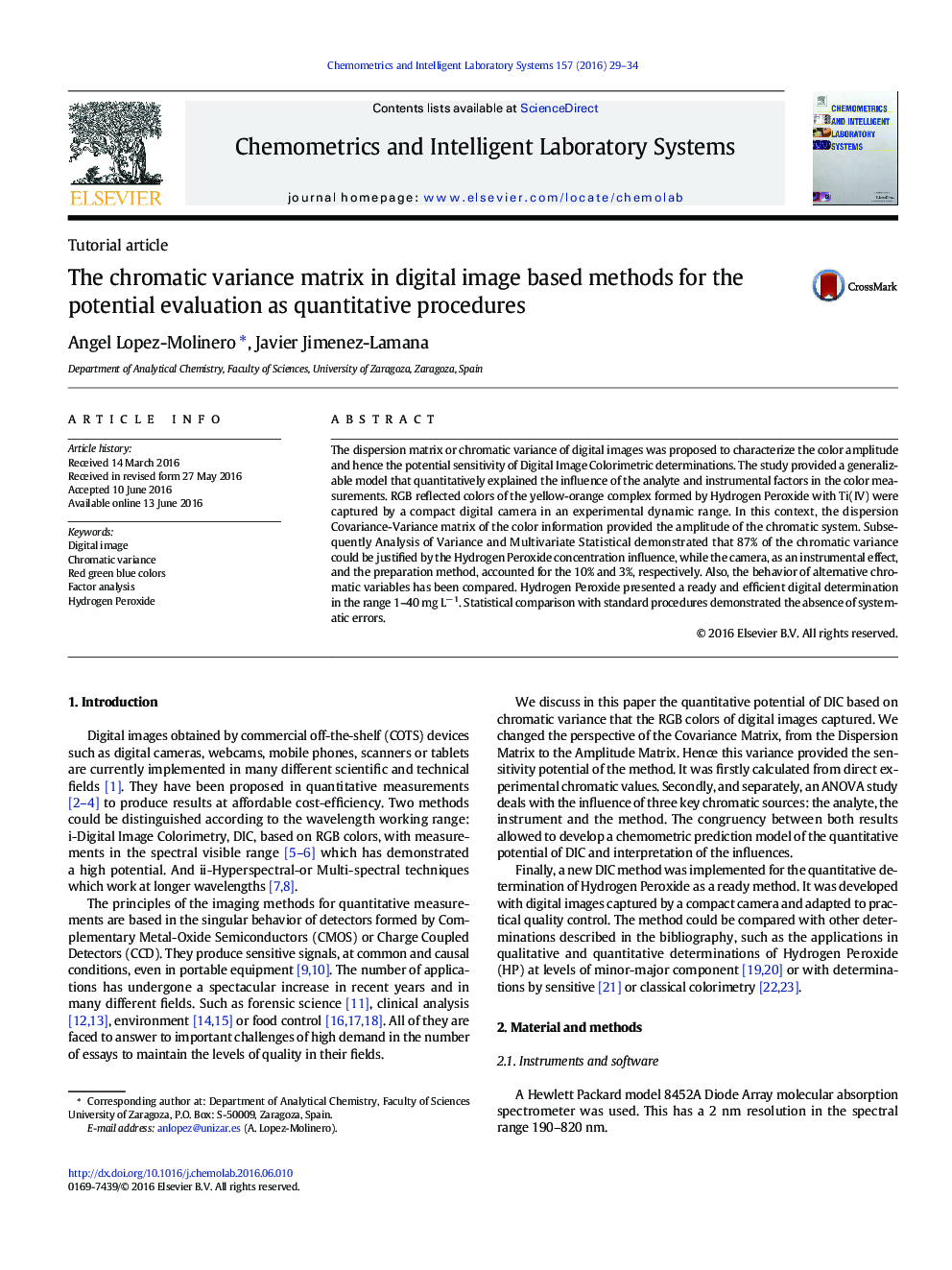| کد مقاله | کد نشریه | سال انتشار | مقاله انگلیسی | نسخه تمام متن |
|---|---|---|---|---|
| 1180125 | 1491522 | 2016 | 6 صفحه PDF | دانلود رایگان |
• Chromatic variance instead of a dispersion magnitude was proposed as a chromaticity amplitude.
• The quantitative potential of DIC procedures was modelled.
• Principal and Secondary Influences were evaluated and could be optimized.
• Color variables, as RGB or relative parameters, provided significant differences in chromatic distribution.
• Hydrogen peroxide determination was applied the Quality Control of real samples.
The dispersion matrix or chromatic variance of digital images was proposed to characterize the color amplitude and hence the potential sensitivity of Digital Image Colorimetric determinations. The study provided a generalizable model that quantitatively explained the influence of the analyte and instrumental factors in the color measurements. RGB reflected colors of the yellow-orange complex formed by Hydrogen Peroxide with Ti(IV) were captured by a compact digital camera in an experimental dynamic range. In this context, the dispersion Covariance-Variance matrix of the color information provided the amplitude of the chromatic system. Subsequently Analysis of Variance and Multivariate Statistical demonstrated that 87% of the chromatic variance could be justified by the Hydrogen Peroxide concentration influence, while the camera, as an instrumental effect, and the preparation method, accounted for the 10% and 3%, respectively. Also, the behavior of alternative chromatic variables has been compared. Hydrogen Peroxide presented a ready and efficient digital determination in the range 1–40 mg L− 1. Statistical comparison with standard procedures demonstrated the absence of systematic errors.
Journal: Chemometrics and Intelligent Laboratory Systems - Volume 157, 15 October 2016, Pages 29–34
